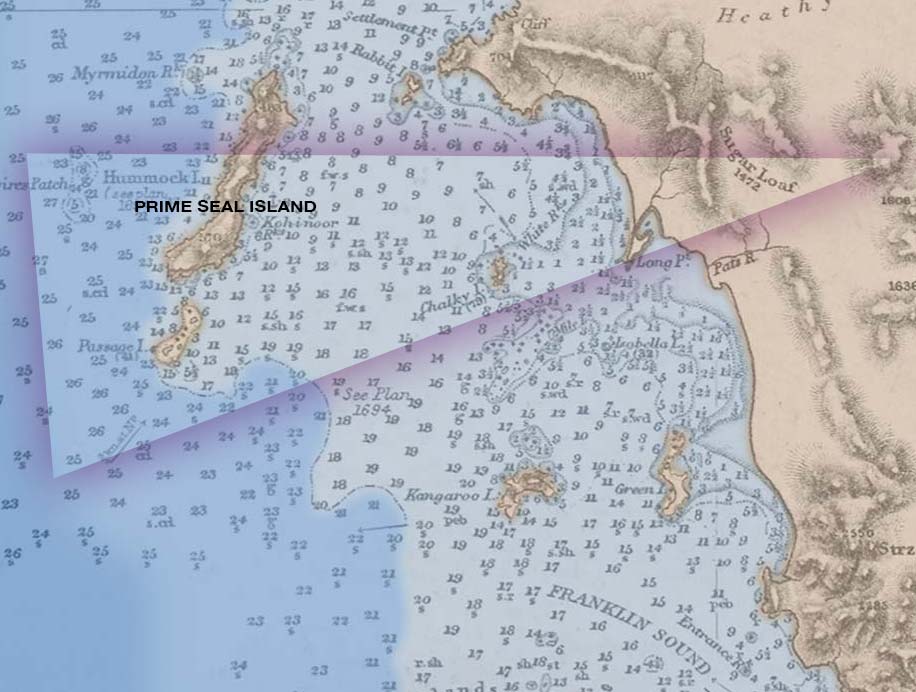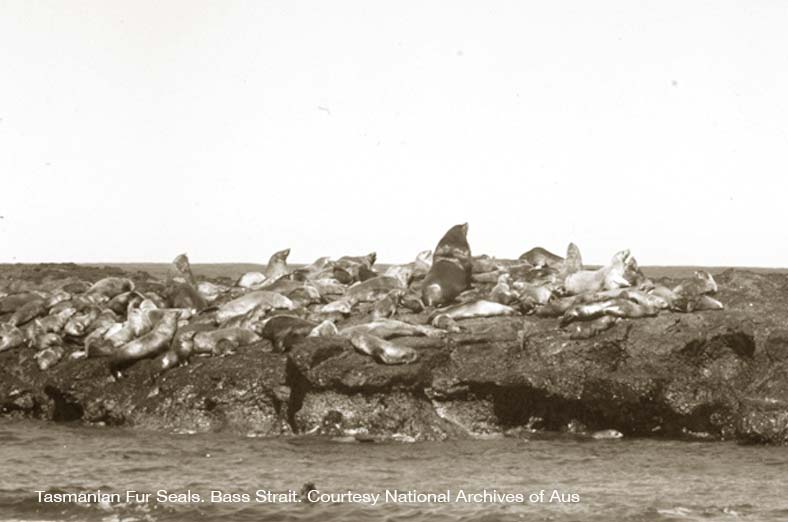
rocky shores and the seals
In 1831, a newspaper report of the Furneaux Group of islands noted that:
Prime Seal Island is lofty and covered with trees, but the soil is light and sandy, water is procured by digging and is also found at the surface in small ponds, seals abound upon the coast, and many mutton birds frequent this place, there is a good boat harbour on the east coast, the distance round is about 4 miles.
While it is interesting that the article mentioned an abundance of seals even as late as the 1830s, everyone recognised that seal numbers were then nothing to those that Matthew Flinders reported on back in Febraury 1798. Then he noted that:
"the number of seals exceeded every thing we had, any of us, before witnessed ... these rocks were also frequented by hair seals, and some of them (the old males) were of an enormous size, and of extraordinary power."

Flinders observations immediately attracted numerous parties of sealers to the islands. Here they plundered the seals to such an extent that when Flinders published his journal just two years later he reported:
"The seals were most numerous upon the south-eastern points of Cape-Barren Island, but they are now mostly destroyed."
The demise of the seal populations meant that by the time Captain Stokes in the HMS Beagle visited the Furneaux Group in 1842, he didn't find any sealers still living here. Rather those that had stayed behind had taken to calling themselves "straightsmen" on account of there being so few seals left.
Stokes commented that:
"The principal trade of the Straitsmen is in the feathers of mutton birds (Sooty Petrels) which annually visit the islands, between the 15th and 20th of November, for the purposes of incubation."
It seems that the noticable absence of seals prompted Stokes to change the name of the island to Hummock Island on his charts to better reflect the reality of what he found there.
More recently the island's official name has reverted to its original title of Prime Seal Island. This makes sense today as all Australian marine mammals are protected and the seal poplations of Bass Strait are continuing their recovery from the plunder of the 1800s.